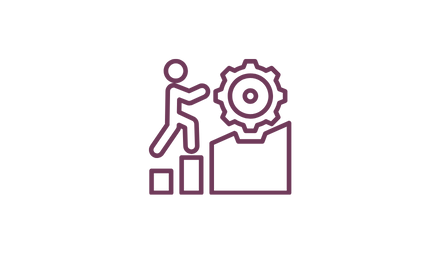All Resources

Hiring new employees is a time-consuming process.
A recent report shows that the average time to fill a vacant position is around 36 days. A lot of things can happen during those 36 days. For one, your teams’ productivity can be affected due to lack of manpower. And the longer it takes to recruit, the more resources you use up. Hence, companies have started using tools and strategies to speed up the hiring process.
Pre-employment testing narrows down your list of applicants from the get-go. Depending on the types of pre-hire tests, it helps you assess the applicants’ skills and personalities to filter out those who are unqualified for the position. This way, only those who would fit the demands of your company will proceed to the next steps.While there are many benefits of pre-employment testing, it also has its own challenges.
A pre-employment test is a good approach to gauge an applicant’s personality and skill. However, it can sometimes be unreliable and inconsistent. This is especially true when it comes to subjective assessments such as personality tests and ambiguous ones such as integrity tests.
There are many reasons why answers to these tests can produce unreliable or inconsistent results. For one, the questions might be too vague which can confuse the applicant. Another reason is that the applicant might choose to lie with their answers and base it on what they think you would want to hear.
One way to avoid this is to be more objective with your questions. Exclude questions that might invite several interpretations from the applicants. So instead of questions such as, “is morality important?” for your integrity test, you could provide a specific scenario and ask them what they would do in that case.
Unreliable answers can lead to inaccurate results, rendering your pre-employment test invalid. For instance, a person applying as a graphics designer answered that they know how to use photoshop, but it turns they really don’t. As a result, you end up hiring an unqualified person for the position.
Hence, you must be careful in selecting what exams you administer during your recruitment process. You need to be able to demonstrate that your tests’ results would correspond to job performance before basing your entire decision on your pre-employment test.
For example, you can administer several types of pre-employment tests to get a better feel of the applicant. You can ask them to answer an objective exam that measures their skills and abilities for the position. Likewise, you can also provide a personality exam to see how they can fit into your company culture.
There is a tendency for pre-employment tests to set certain standards for applicants. As a result, you end up accepting people with similar backgrounds, skills, and personalities. This is also the reason why many applicants have realized the importance of a college education because most pre-employment tests would require them to have one that is related to the vacant position.
Break away from this discriminatory tendency by being more inclusive of how you accept applicants. Instead of focusing on what applicants finished in school, you can focus more on their relevant experiences and skills. In fact, 74% of hiring managers observed that there is a lack of skilled talents in the workforce in the past years. Who knows, maybe you will find a hidden gem in a place where you least expect it.
Both pros and cons of pre-employment testing involve time. On one hand, it can save your HR team time in finding qualified applicants. On the other, applicants can take a long time to answer your pre-employment test. Some might even abandon it midway through.
Avoid this by keeping your exams simple and straight to the point. This is something to consider in your online recruitment. As much as possible, make sure that these exams can be accomplished in less than an hour. Otherwise, you might miss out on some great talents because your pre-employment tests are too long or too complicated.
Generic pre-employment tests can sometimes have questions that are irrelevant to your company or the vacant position. In fact, the entire exam itself could be inappropriate for its intended purpose.
So instead of relying on generic pre-employment assessment tools, consider creating or customizing your own exams. This way, you can tailor the questions to the specific needs and demands of your company. For example, you can ask them for specific instances where they were able to resolve issues under pressure if the position they are applying for is a high-pressure job.
Going through hundreds of applications just to fill one position can get tiresome. And doing it manually can lead to delays in hiring, or worse, recruiting the wrong person for the position. One way to make the job easier is by leveraging pre-employment assessments. This can help narrow down your list of applicants so that only the qualified ones will move on to the next stage of your recruitment process.